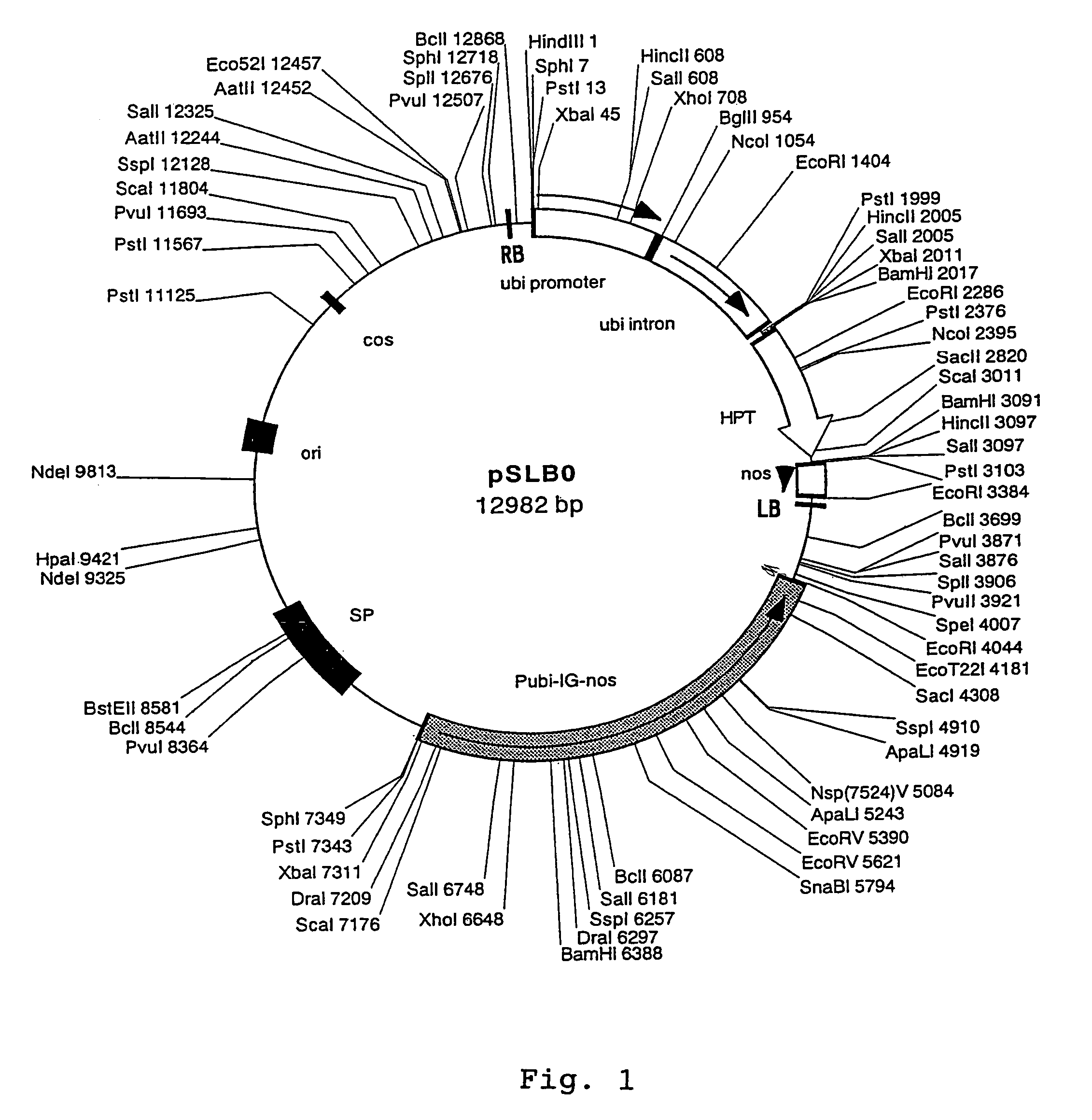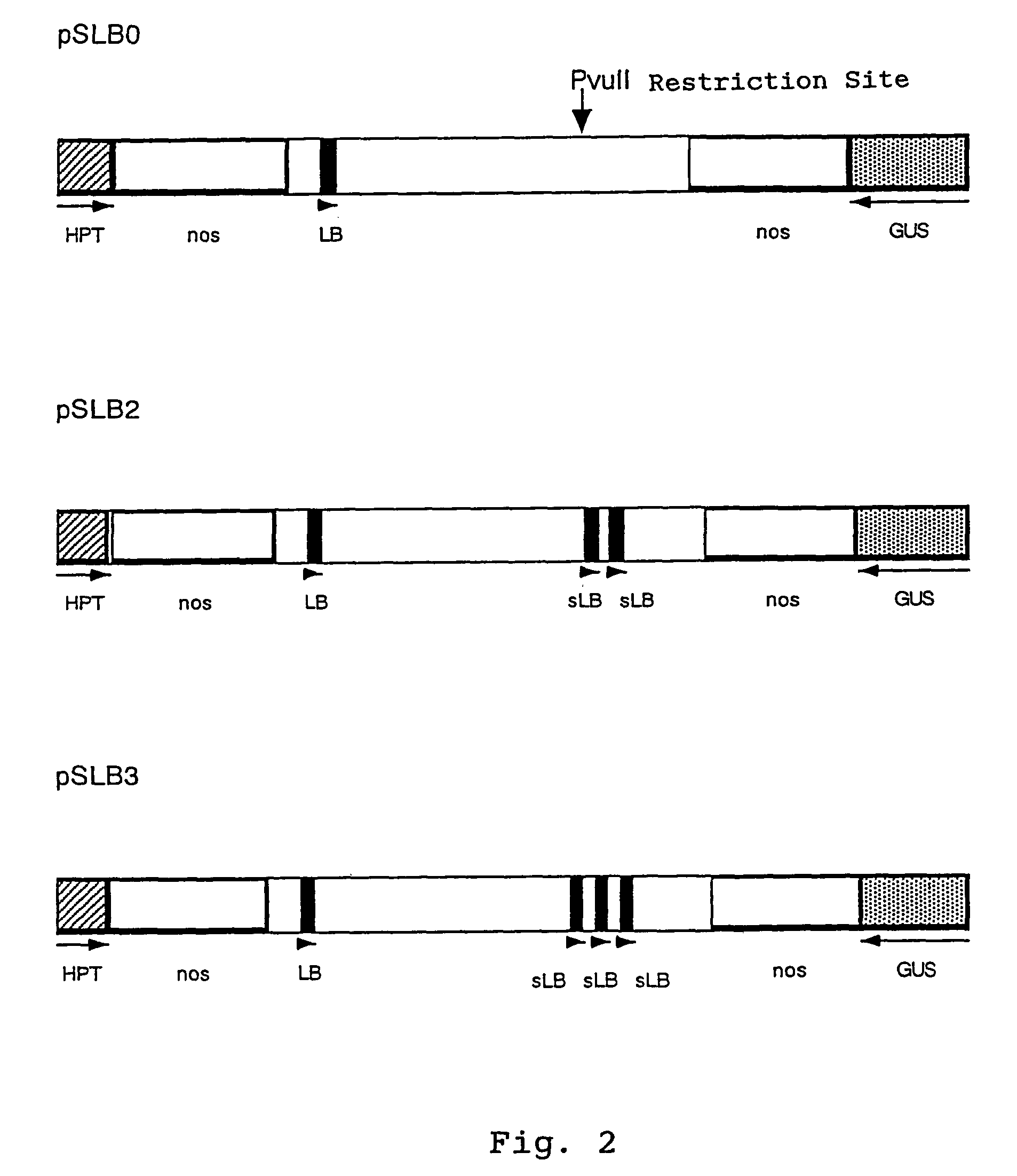Vectors for transforming plants
- Summary
- Abstract
- Description
- Claims
- Application Information
AI Technical Summary
Benefits of technology
Problems solved by technology
Method used
Image
Examples
example
Example 1
(1) Preparing Vectors
[0030]Plasmid vector pSB11 (Genbank Accession No. AB027256, Komari et al., Plant Journal 10, 165–174 (1966)) was modified to have within the T-DNA region a cassette for expressing the hygromycin resistance gene (HPT) by means of a ubiquitin promoter and a ubiquitin intron (Christensen et al., Plant Molecular Biology 18, 675–689 (1992) and into the plasmid, a cassette for expressing a catalase intron containing GUS gene (Ohta et al., Plant Cell Physiology 31, 805–813 (1990)) by means of a ubiquitin promoter was inserted at the site recognizable by restriction enzyme StuI. The thus prepared plasmid was designated pSLB0 (see FIG. 1 and SEQ ID:NO. 1). The nucleotide sequence of pSLB0 is shown as SEQ ID:NO. 1.
[0031]Then, based on the nucleotide sequence of Ti plasmid pTiAch5 (Genbank Accession No. K00548), a synthetic DNA containing a left border sequence (hereunder abbreviated as LB) and the complementary synthetic DNA were prepared, they were annealed and ...
PUM
 Login to View More
Login to View More Abstract
Description
Claims
Application Information
 Login to View More
Login to View More - R&D
- Intellectual Property
- Life Sciences
- Materials
- Tech Scout
- Unparalleled Data Quality
- Higher Quality Content
- 60% Fewer Hallucinations
Browse by: Latest US Patents, China's latest patents, Technical Efficacy Thesaurus, Application Domain, Technology Topic, Popular Technical Reports.
© 2025 PatSnap. All rights reserved.Legal|Privacy policy|Modern Slavery Act Transparency Statement|Sitemap|About US| Contact US: help@patsnap.com


